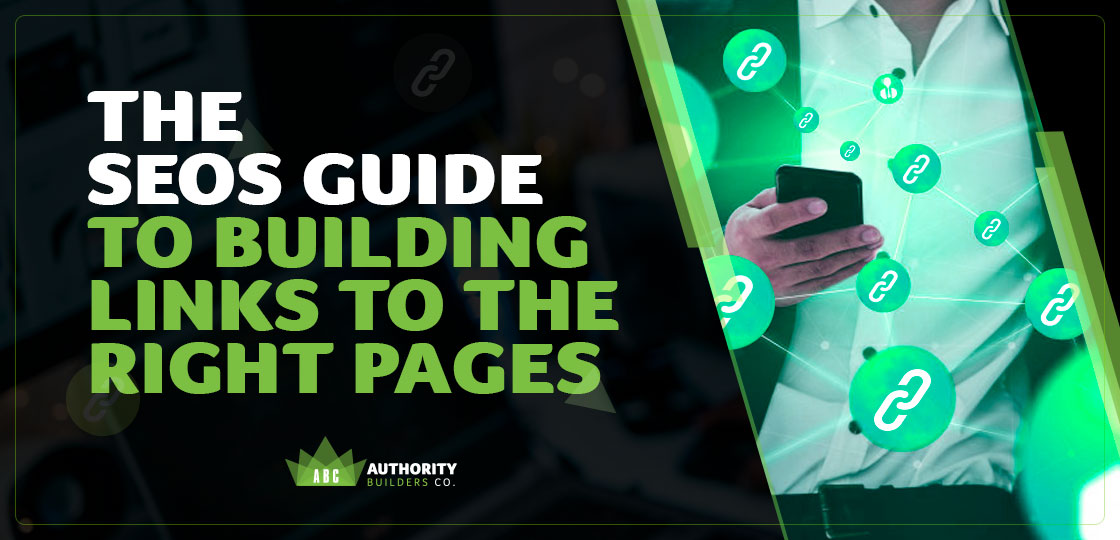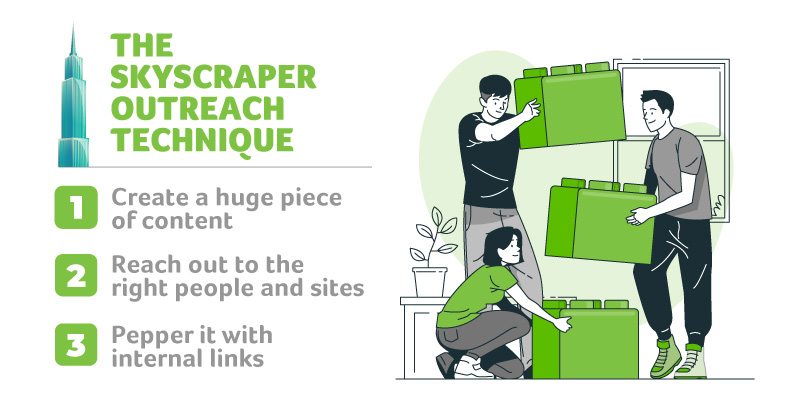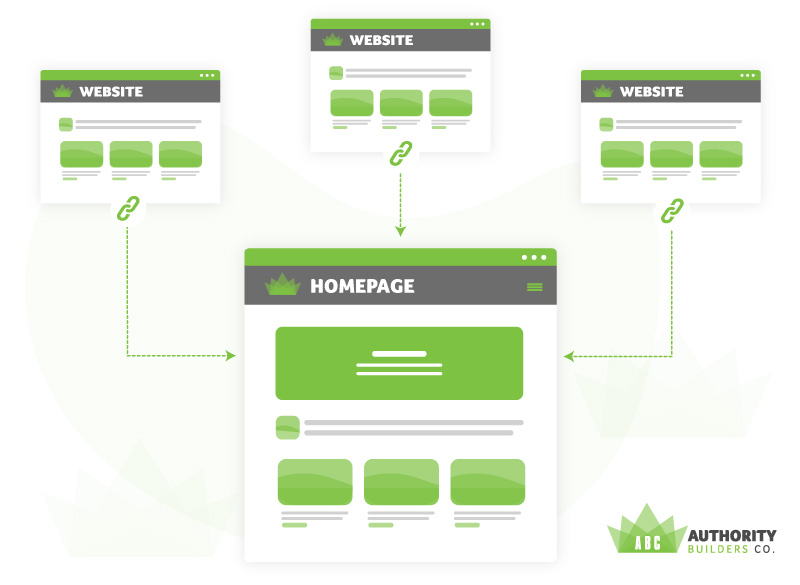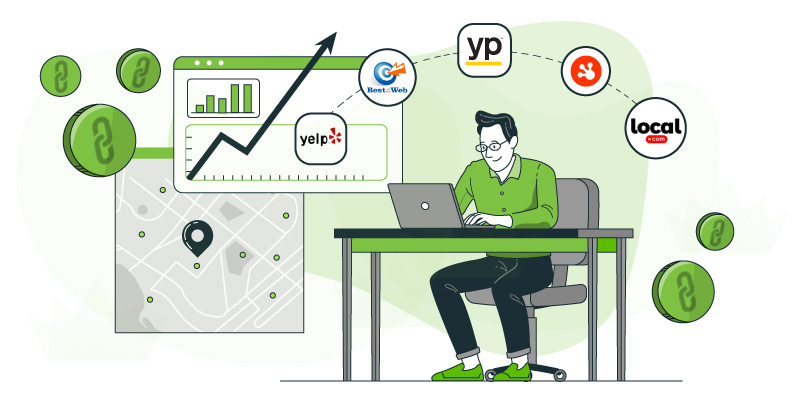
While there’s no debate about the importance of backlinks, other questions commonly pop up:
Which pages should you build backlinks to?
Should you send links to your homepage? Your resources? Your blog?
What type of content benefits from backlinking the most?
And how can you build backlinks in a way that’s both safe and powerful?
We answer all of those questions and more in this guide. If you want to learn more about link building techniques and how to choose the right pages for backlinking, then read on!
🎥 Video Content
For those who like to consume their link building content visually, I’ve got your back:
Question #1: What Is Link Building & Why Is It Important?
A link building campaign aims to increase the number of external links that point to your website. There are many ways to build backlinks, from guest posting to getting business citations.
Every backlink passes “link juice”, also known as link equity. Link equity is a major ranking signal. Pages with tons of backlinks tend to rank higher than those without links pointing to it, so you have to choose those pages wisely if you’re going to make the most out of your SEO efforts.
Question #2: What Kind Of Content Should You Link To?
Although there are many different kinds of content, for link building purposes, we can categorize most of them into two types: informational content and commercial content.
Informational content is any piece of content that aims to inform and educate. These include your how-to’s or in-depth guides on a particular topic.
Examples
- How to Grow Tomatoes in Your Backyard
- The Freelancer’s Guide to Taxes in 2024
On the other hand, commercial content tries to push a product or service.
Examples
- Best Fertilizers for Home Gardens
- MAC Lipstick Review
One of the most common myths in link building is that you should only link to informational content. This myth started because, in the natural world, most backlinks point to info-type content pieces. It makes sense that an article on how to unclog your sink will get more links from other websites than a plumbing service page.
But just because a practice is more common, it doesn’t mean that it’s the most effective. As a result, plenty of SEOs shy away from linking to content that satisfies commercial queries.

Focusing your link building efforts on informational content ignores the potential positive effects of building backlinks to directly commercial content. If you link directly to a page, that page gets 100% of the link juice. It’s not diluted as it goes through the tiered links.
BONUS: FREE Guide on How to Acquire High-Quality Links
Sending links to info pieces to commercial content isn’t the only way to build powerful links. In fact, in some cases, it might not even be the most efficient way of doing it. You can safely build links to commercial content, although there’s a caveat we’ll get to in just a bit.
Question #3: Does The Skyscraper Outreach Technique Work?
SEOs use a wide variety of techniques to build strong backlinks, but very few are as widespread as the Skyscraper Technique. Created by Brian Dean of Backlinko, the Skyscraper Outreach Technique claims to help you earn a ton of traffic and backlinks with a single asset – or at least, that’s the selling point of this technique. Then, you use that asset to funnel link juice to the other pages on your website.
Let’s break down the process.

First, you create a huge piece of content. We’re talking thousands of words and a super in-depth look into whatever query you’re targeting. This should be a definitive, comprehensive guide to the topic. You can include infographics, visuals, data, or video – whatever helps this content stand out from the hundreds or thousands of others like it.
Then, you reach out to other people and sites that might be interested in linking to your content. Look to industry blogs and influencers in your niche. If they’ve linked to similar content in the past, they’re more likely to link to yours.
Once you’ve accumulated a ton of links to your skyscraper piece, you pepper it with internal links to other pages on your site, especially commercial pages. This linking process is most often used by SEOs who don’t want to link directly to their commercial content.
So the link equity goes from the linking domain to the informational piece, which then passes it down into your internal or commercial pages.
It all sounds great in theory, but does it actually work?
We ran some single variable tests, which means that we controlled for every other factor aside from this technique. We created a test website just for the experiment and added two inner pages: one skyscraper post, and the target test page.
Page A: domain.com/skyscraper
Page B: domain.com/test-page
Page B was mostly orphaned, which means it’s not linked to any other pages on the site except for Page A. Then, we sent 5 powerful PBN links to Page A to see if any link juice would pass down to Page B.
When we started the experiment, Page B was ranking at #39 for our target keyword. It took 47 days to see ranking changes, and it only went up 10 places from #39 to #29.
BONUS: FREE Guide on How to Acquire High-Quality Links
So there are two really interesting findings here:
- It takes a long time to pass link juice from the informational content to the commercial page. It took roughly two months, so there’s a huge delay there.
- The effect of the links was extremely muted. It didn’t increase the rankings as much because link equity was filtered through another page.
This tells us that if you want to rank something on page 1, you need to link to it directly so that it gets the maximum amount of link juice.

The big question now, though, is how many links can you point to a piece of commercial content without harming your rankings?
Caveat: The Black Sheep Effect
There’s a reason why the page 1 results are ranking highly – they’re doing something right. So if you want to rank, you need to look at what they’re doing and mimic it.
The “Black Sheep Effect” is when your page stands out too much from the rest of the page 1 results. In terms of backlinks, if you have significantly more or less backlinks than your competitors, search engines probably won’t rank you..
To figure out the maximum number of links that you can send to your content, check out the top 5-10 results for your target keyword. Count how many links these pages are sending. The highest number is your maximum.
For example, if the highest number of links you’ve found in the top results is 10, don’t build more than 10 links. If you want to push past that number to pass more link juice, there’s an easy solution: send links to those internal pages that link to your commercial content. It doesn’t matter whether they’re informational or commercial, as long as you stick to the “Black Sheep” maximum.
Question #4: Should You Build Links To Your Home Page?
One of the biggest questions in link building is whether or not you should link to your home page. Many webmasters don’t optimize their home page for keywords, so they wouldn’t want to rank that or build links to it if they can just pass that link juice directly to the pages they actually do want to rank.

But if you want your backlink profile to look organic (also known as “link pillowing”) you need to have links pointing to your home page. Websites naturally get a lot of links to their home page, so it looks sketchy if you have plenty of backlinks to your inner pages without any links to your home page.
BONUS: FREE Guide on How to Acquire High-Quality Links
On the other hand, you don’t want to send all of your backlinks to the home page because you have other pages that you want to rank (and we’re trying to be efficient here, right?). If you want to replicate a natural backlink profile without missing out on ranking opportunities, it’s advisable to keep your home page backlinks within a certain range.
The typical site has around 40-60% of its backlinks pointing to its home page. Of course, if you fall outside of the range, it’s not that big of a red flag. There are plenty of successful outliers, but this is a general guideline for the best results.
Easy Homepage Links: Business Citations

If you want to get solid homepage backlinks, there’s a powerful but FREE way to do it: business citations. It’s easy and free to set up your business on an industry directory or business listing site, and for very little effort, you can get a backlink from an authoritative domain. Even affiliate websites can use this technique to gain valuable backlinks!
It’s cheap to outsource as well. I get mine from SEO Butler.

Conclusion
When it comes to link building, it’s not just the quality and quantity of your backlinks that matter; the pages that you choose to target have a major impact on your SEO. The most effective way of ranking your content is by targeting them directly so that the link juice doesn’t get diluted.
But to avoid triggering the “Black Sheep Effect”, you still need to mimic a natural-looking backlink profile by limiting the number of links you point to commercial content and making sure that you send enough links to your home page.
If you need help building any of these links or performing any of these analyses, check out ABC Plus by Authority Builders where we do it all for you.
Got Questions or Comments?
Join the discussion here on Facebook.
